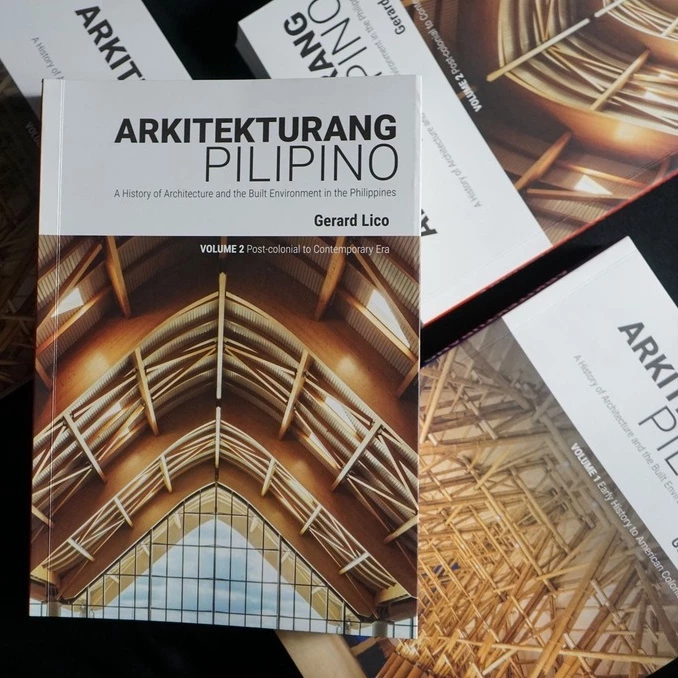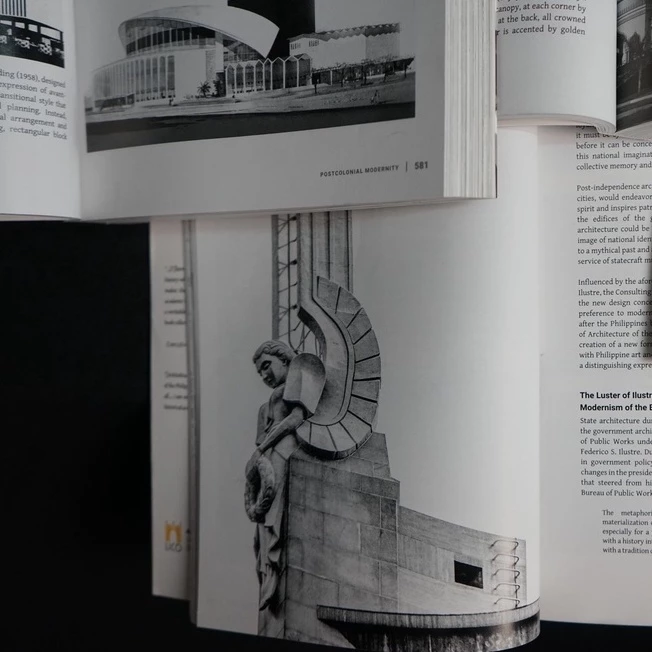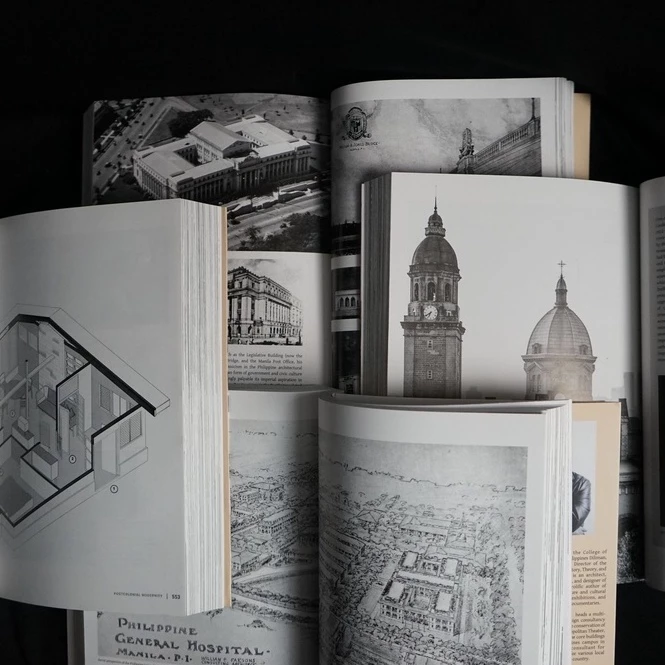

Buildings are historical records that palpably manifest the highs and lows of a society, and how that society creatively responds to environmental imperatives, the technological milieu, power structures, and even material constraints.
Architecture, therefore, is history built of wood, stone, concrete, steel, and glass among others, awaiting to be deciphered to recover the stories it had witnessed in the past. It is hoped that this book will connect us to this past by providing a channel through which walls could talk, and, at the same time, allow us to project into the future as we gain wisdom from the past framed by this book. As we experience the conditions that shape Filipino architecture today with a level of criticality endorsed in this book, we will be in a better position to decide what direction to take for Philippine Architecture to break new grounds.

“...[It] presents both a survey and a close reading [which] offers a horizon even for the uninitiated. The photographic research is exemplary, too, and will surely draw the attention of readers. Both text and image will stimulate the imagination and sustain the interest in the insights the book proposes.”
- Patrick Flores, Ph.D. Professor, Department of Art Studies University of the Philippines
“In this all-encompassing and democratic explanation of Philippine architecture, the plural creative expressions of Filipinos are underscored and the myriad contexts from which the built environment emerges are emphasized. Thus, architecture is presented here not simply as buildings that are frozen in time, but really—as dynamic processes formed and informed by a multitude of contexts.”
- Edson Roy Cabalfin, Ph.D. Professor, School of Architecture Tulane University
“...[T]here is no current book on Philippine architectural history which is of this discursive breadth and scope. This makes the two-volume book an important and valuable academic tool and resource on Philippine architecture, and a veritable must have in the library of any serious scholar, book collector and cultural enthusiast.”
- Lorelei D.C. de Viana, Ph.D. Executive Director, Center for Filipino Architecture
United Architects of the Philippines
“[Arkitekturang Pilipino] offers a highly-visual narrative of the Philippine Architecture which will be appreciated by all.... I am very impressed [with] how it [is] presented, with historical accuracy, yet easily understood.”
- Jonathan Manalad, Ph.D. Secretary-General, United Architects of the Philippines